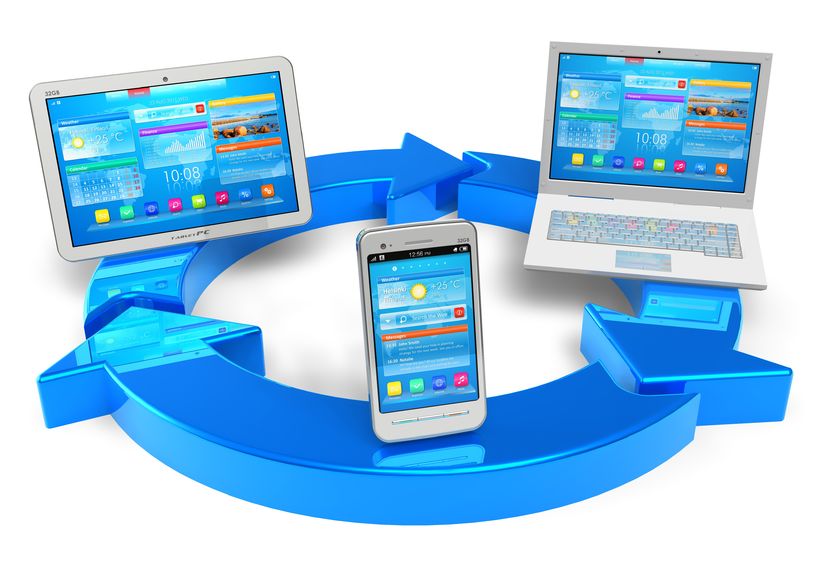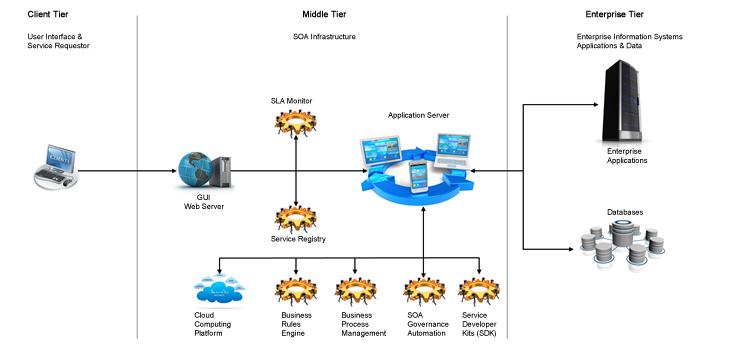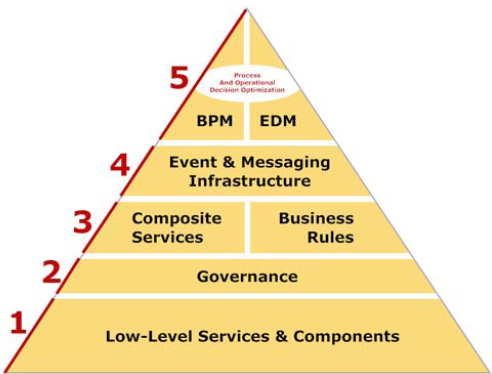
You may be wondering why we decided to place our Service Oriented Architecture (SOA) capabilities all by themselves in a separate page instead of placing them under our Enterprise architecture practice along with DoDAF, TOGAF and FEA. The reason: It’s because we believe SOA is not only an architectural paradigm, but is also a concrete design pattern that allows organizations to quickly transition from ubiquitous stove-pipes and legacy systems to a more robust service focused paradigm.
Service Oriented Architecture (SOA) comes naturally to RiVidium. In fact, our founder and CEO, Manny Rivera, was one of the driving forces in the Army advocating the implementation of SOA. Download Manny’s white paper, “The Elephant in the SOA Room - XML Data Startegy,” to learn more.
RiVidium’s SOA is the genesis for our cloud delivery environment, data center consolidation and Agile development framework. Our SOA approach is implemented through a tiered architecture:
- Client Tier: contains the service requestors
- Middle Tier: contains the code to route and transform messages, manipulate data, and coordinate and monitor service execution
- Enterprise Tier: contains major business applications and databases

In order to deliver on our promise of the three-tiered architecture, RiVidium uses a maturity model to analyze the readiness of an organization in embracing the various levels of an achievable SOA. The figure below depicts our maturity model, and, as the pyramid suggests, each stage, at least in part, depends on the former.

- Level 1 begins with the foundation of services and related components
- Level 2 requires a governance program to ensure that these services are consistently developed using a common framework, along with associated security policies and a means for publication
- Level 3 is the position where significant benefits begin to be realized. With a governance program in place, it now becomes possible to build more coarse-grained, composite services, whose audience may span beyond just the technical team
- Level 4 is the level at which ability to monitor, in real time, events that occur within your enterprise become essential for optimizing business processes and operational decisions
- Level 5 is the point at which Business Process Management (BPM) and Enterprise Decision Management (EDM) happens. Although you can attempt to introduce these technologies at a lower position in the maturity model, both positions benefit immensely by having the prior layers in place. BPM almost always requires the ability to integrate tightly with applications, data, and business rules, and when these assets are exposed as services using SOA principles, implementing BPM is greatly simplified. Centrally managing business rules through EDM exposes business rule assets to a wider audience of business users, which are best positioned to align them to the dynamic changes of the marketplace. Consequently, these can detect more accurately events that can be assessed in real time through complex event processing (CEP) filters.